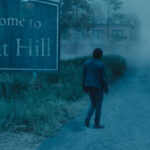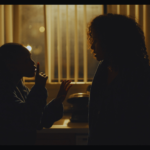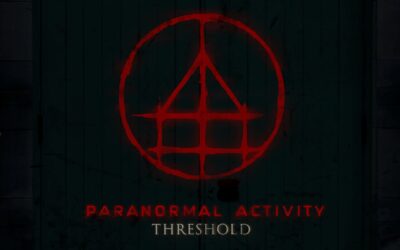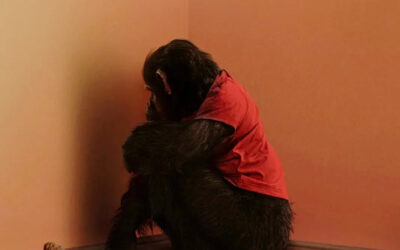Halloween is a day when ghosts and ghouls come out to play, and danger lurks around every corner. There is a horde of legends and stories that serve as cautionary tales, such as keeping a Jack-O-Lantern lit, giving out candy, not disrespecting the dead, and parents checking to ensure sweets aren’t tainted or contain razor blades or needles. There’s a reason for all that: demented villains have committed horrific crimes on Halloween. And we’ve got a list. Here are six true crimes committed on our favorite holiday.
The Real Candy Man
On Halloween in 1974, Ronald Clark O’Bryan earned the title “The Candy Man.” Why? Because O’Bryan poisoned pixie sticks and handed them out to five trick ‘r treaters, two being his own children. His eight-year-old son Timothy was the only one to eat the sugary treat laced with potassium cyanide. Timothy was dead within the hour.
The death sent their hometown in Texas into a panic that spread across the country. O’Bryan was soon arrested after police discovered he was in deep debt and had taken out massive life insurance on both of his children. The media dubbed him “The Candy Man.” In 1984, Ronald O’Bryan was executed.
How could a father murder his own children and then try to cover it up by poisoning more children? Why would he choose such a horrible death for his children?
Cyanide poisoning is an absolutely brutal way to go. It starts with a headache, vomiting, and trouble breathing. Then, the victim begins to have seizures and eventually cardiac arrest. The death isn’t a quick one, and it’s painful. It can take five to twenty minutes to die.

Halloween Double Murder
On Halloween night, 2004, two roommates, Leslie Mazzara and Adriane lnsogna, went to bed after a night of handing out candy. The third roommate, Lauren Meanza, was awakened by the sounds of a scuffle at 1 a.m. She fled the house. After time passed, she returned to the house to discover a blood-drenched scene and both of her roommates dead from multiple stab wounds. When investigating the scene, officers discovered a pile of cigarette butts on the property but found no matches in the DNA database.
During the investigation, two of the women’s friends became suspects, Lily Prudhomme and her husband, Eric Copple, who were only engaged at the time of the murders. The police conducted over 1,000 interviews and tested over 218 people but somehow missed testing Copple. A year after the crime, Eric Copple turned himself in and confessed.

A Family Killer
On Halloween night, 2010, an Ohio teen, Devon Griffin, returned home from an event at church and went to his room to play video games. Later, Griffin discovered that his mother, stepdad, and his brother had been brutally murdered. Both parents had been shot, and his brother was killed by blunt force trauma to the head. At first, he thought it was a horrible Halloween prank, but soon realized it was an awful reality, describing the scene as “something out of a haunted house.”
As the investigation began to go through suspects, they took a look at the stepfather, William Liske’s son from a previous marriage, 24-year-old William Liske Jr., who had a long history of aggression and schizophrenia and did not get along with his stepmother. He was arrested and convicted and took his own life while serving his sentence in 2015.

The Wrong House
In 1992, Yoshihiro Hattori, a Japanese exchange student living in Baton Rouge, was out on Halloween with the son of his host family and was headed to a Halloween party. Unfamiliar with the neighborhood, he rang the doorbell of the wrong house. The home’s owner, Rodney Peairs, threw the door open as the teens headed back to their car. In his hand was a .44 Magnum. Hattori turned around and said, “We’re here for the party.” Peairs raised his gun and pulled the trigger, killing the boy on the spot.
Later, he claimed he feared for his life because the boys were “scary.” It took the governor of Louisiana and the Japanese consulate getting involved for charges even to be brought against Pearis, only for him to be acquitted of manslaughter.

A Serial Killer Makes A Prediction
In the early hours of Halloween 1981, Ronald Sisman and Elizabeth Platzman were brutally murdered in their Chelsea apartment, beaten and shot execution style. Police first believed that drug money was the cause of the murders, but the case took a bizarre turn when a prison informant claimed that one of the other inmates, “Son of Sam” killer David Berkowitz, had, in detail, predicted it would happen. Saying that the cult he was a member of would carry it out. Did Berkowitz know the killer? The police never found the killer, and the case remains unsolved.

A Smiley Face Murder
Chris Jenkins, a 21-year-old student at the University of Minnesota, was last seen leaving a downtown Minneapolis bar, The Lone Tree, on Halloween night in 2002 after reportedly being kicked out and leaving his friends behind. Four months later, his body was discovered in the Mississippi River, still wearing his Halloween costume, a buckskin-like Native American outfit, with his arms folded to his chest.
Since Chris was intoxicated that night. Authorities initially believed his demise was either an accident or suicide. However, his parents refused to accept that. In 2006, the death was reclassified as a homicide after an incarcerated suspect confessed he witnessed Chirs’ murder and his body thrown off a bridge. There was never enough concrete evidence to make an arrest. There is a theory that the crime was part of the mysterious, unsolved “Smiley Face Murders,” which are linked to over 40 murders of young men across the country marked by a graffiti image of a smiley face. The case remains unsolved.
A few months before Chris disappeared, a man who visited the same bar was leaving and was almost kidnapped by a man in a van. He escaped but got ill. It turns out he had been drugged. Chris and the survivor weren’t the first people to fall victim to the area and bar. Several other college students, all young men, had also disappeared from the area. Was Chris killed by the same suspect?















